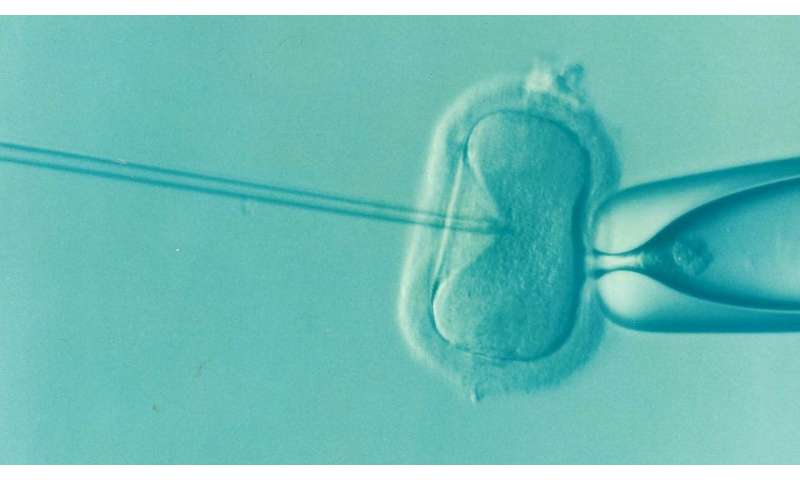
A new paper in JNCI: Journal of the National Cancer Institute, published by Oxford University Press, indicates that receiving assisted reproductive technology does not increase the risk women have for developing ovarian cancer.
Previous research indicated that women who use assisted reproductive technology in order to have a successful pregnancy could potentially be at risk for ovarian cancer and non-malignant borderline ovarian tumors due to excess stimulation of the ovaries.
Since the introduction of assisted reproductive technology —including in vitro fertilization, intracytoplasmic sperm injection and cryopreservation of embryos —four decades ago, some researchers have raised concerns that such technology might increase the risk of ovarian tumors. Researchers have proposed that this could potentially be due to large increases of sex hormone levels and multiple punctures disrupting ovarian tissue.
Because of the worldwide increase in the use of fertility treatments and the poor prognosis of ovarian cancer, it is important to examine the association between fertility treatments and long-term risk of ovarian tumors. Several epidemiological studies have investigated the association between such treatments and risk of ovarian tumors, with inconsistent results. In 2013, two meta-analyses were published showing that women who received fertility treatments were more likely to develop ovarian cancer compared with the general population. But it remained unclear if fertility treatments caused women to develop ovarian cancer or if the association could be due to other factors, such as infertility itself.
Researchers here were able to link a database on use of assisted reproductive technology treatment procedures in the Netherlands with national cancer registries to see if an excess risk of ovarian tumors resulted.
This nationwide cohort study included 30,625 women who received ovarian stimulation for ART between 1983 and 2001 and 9,988 infertile women who did not receive such treatment. Incident invasive and borderline ovarian tumors were ascertained through linkage with the Netherlands Cancer Registry and the Dutch Pathology Registry. The researchers investigated risks of ovarian tumors in infertile women who received ovarian stimulation for assisted reproductive technology compared with the risks in the general population and with infertile women who received no such treatment.
After a median follow-up of 24 years, researchers observed 158 invasive cancers and 100 borderline ovarian tumors. No increased risk of ovarian cancer was found in women who received assisted reproductive technology treatment compared with infertile women who did not receive the treatment. Even after more than 20 years the risk of ovarian cancer was not increased. Compared with women in the general Dutch population, women who received assisted reproductive technology did have a higher risk of ovarian cancer, but this appeared to be mainly caused by the higher proportion of women who received assisted reproductive technology who remained childless. Childlessness has been shown to be a strong risk factor for ovarian cancer. Among for assisted reproductive technology-treated women in the study ovarian cancer risk decreased with a larger number of successful for assisted reproductive technology cycles (resulting in childbirth).
Women who received such treatment appear to have an almost two-fold increased risk of borderline ovarian tumors, both when compared with the general population and with infertile women not receiving the treatment. However, risks of borderline ovarian tumors did not increase after more treatment cycles or after longer follow-up. This suggests that the increased risks observed for borderline ovarian tumors might be due to underlying patient characteristics rather than the treatment itself. Borderline tumors are rare in the general population and are generally easy to treat.
Source: Read Full Article
